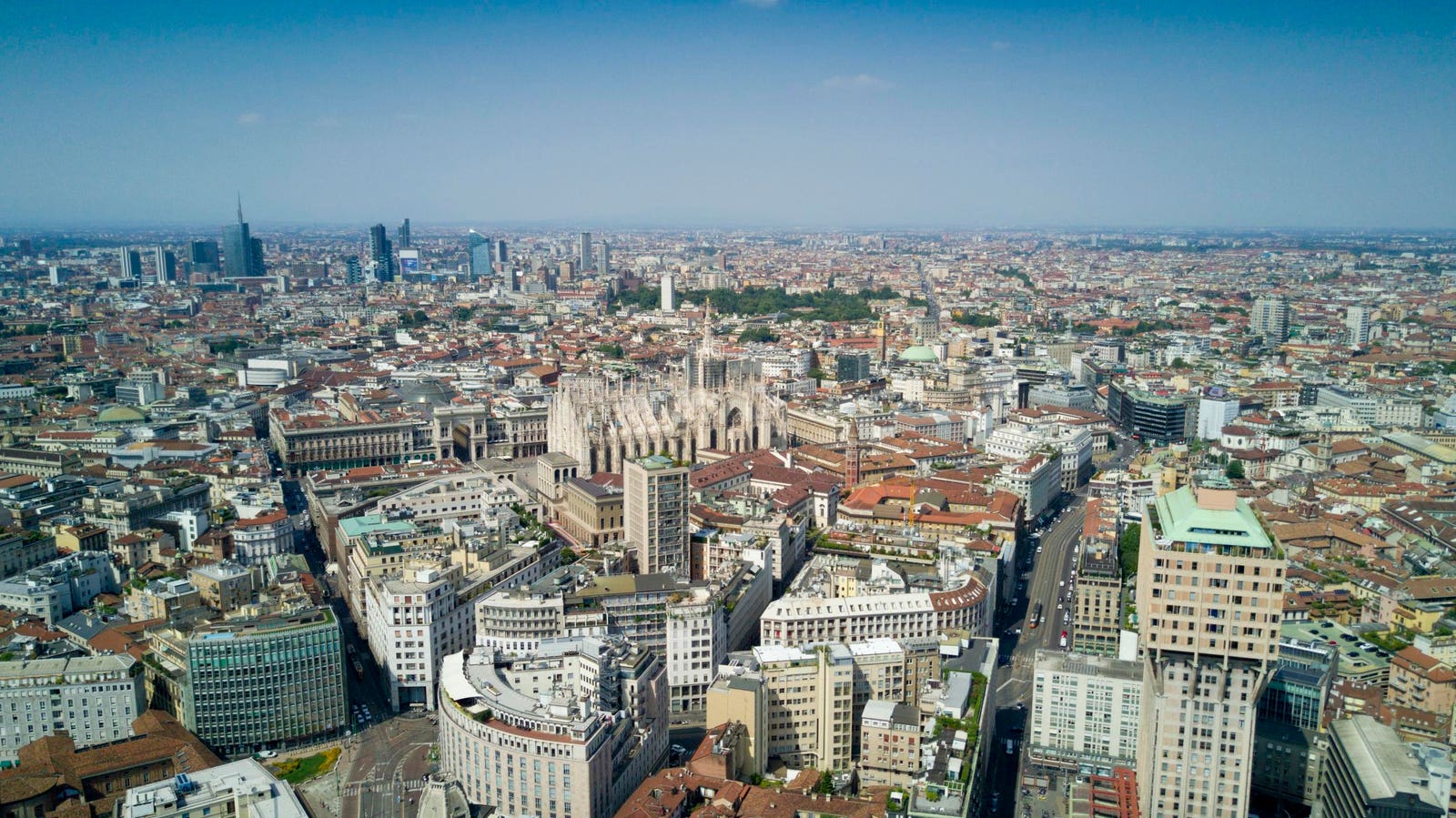Aerial photo shooting with drone on Milan Center, the central business area of the city with new … More
While tax reform debates in the UK and the US continue to make headlines, one of the most consequential developments of the past years has played out more quietly – in Italy. The country’s flat tax regime, first introduced in 2017 and increased to €200,000 in 2024, is rapidly repositioning Italy as a destination of choice for high-net-worth individuals (HNWIs). And the impact is now increasingly visible in the real estate and construction sectors.
Globally, we are seeing record levels of wealth migration. In 2025 alone, more than 142,000 millionaires are expected to relocate, with the UK projected to lose around 16,500.Italy, by contrast, is expected to welcome approximately 3,600 of these HNWIs – a substantial number shift for a country that, until the introduction of its flat tax regime, had not featured prominently in global wealth migration trends
Prime Property Demand Is Just the Beginning
The most immediate impact has been felt in the real estate market. Milan, Rome, Florence, and lifestyle destinations such as Lake Como and Tuscany are experiencing rising demand for prime residential stock. Milan’s residential prices rose 2% in the past year and have increased between 15 to 28% over the last five years, making it both the most dynamic and the most expensive property market in Italy. In the city’s prime areas such as Brera and Porta Nuova, prices now exceed €15,000 per square metre. Energy-efficient new-builds average €7,250 per square metre, often selling out before completion.
Demand is also accelerating in formerly overlooked districts like Bovisa and Lambrate, where prices rose by as much as 12% in 2025 alone due to regeneration and transport upgrades.
However, this does not appear to be just a passing housing trend. Many of those relocating are putting down roots – setting up businesses, moving their families, and enrolling their children in local and international schools.
Cities such as Verona, Bologna, and Turin, which have often been overlooked by global buyers, are also seeing more interest. . Developers are responding accordingly, with new investments flowing into Build-to-Rent (BTR) schemes, renovation projects, and new-build developments designed for long-term use. The focus is shifting from lifestyle to liveability – schools, services, infrastructure, and the everyday quality of life.
A Predictable Framework, An Evolving Market
What makes the flat tax regime so compelling is not just its cost – €200,000 annually on foreign income, plus €25,000 for each additional family member – but its predictability. Individuals can apply for advance tax rulings before relocating, providing rare legal clarity. Between 2017 and 2023, nearly 4,000 people joined the regime, and uptake has since accelerated. In 2023, 46% of participants also declared Italian-source income totalling €87 million.
The regime’s exemption of foreign-held assets from Italian wealth, inheritance, and gift tax makes it particularly appealing for long-term planning. For family offices, this framework offers stability in a region where tax law unpredictability can often be a deterrent.
Real Estate Meets Broader Urban Regeneration
The influx of international residents is also fuelling wider infrastructure demand – from international schools and healthcare to digital services and transport. This dovetails with Italy’s €194.4 billion National Recovery and Resilience Plan (NRRP), funded by €71.8 billion in EU grants and €122.6 billion in loans. The NRRP is already funnelling €34.5 billion into sustainable mobility, €24.7 billion into renewable energy and waste systems, and €16.9 billion into energy efficiency upgrades for residential and public buildings.
Southern Italy is also attracting renewed interest. Regions like Campania, Puglia, and Sicily are now part of the investment conversation. Rich in architectural heritage and natural capital, they offer value – but also regulatory complexity. For developers, this creates both opportunity and friction. For local governments, it signals the urgency of streamlining permitting and improving planning coordination.
Challenges Ahead: Managing Growth and Public Perception
Despite the momentum, structural challenges remain. Demand continues to outpace supply, especially in Milan’s most desirable neighbourhoods, where properties often receive multiple offers and close within weeks. Developers face higher construction costs, lengthy permitting timelines, and increasingly complex energy-efficiency regulations, all of which raise barriers to delivery.
Affordability is also becoming a concern. The inflow of international capital is driving up prices, widening the gap between local incomes and housing costs. Without a parallel response on the supply side, Italy risks deepening affordability pressures similar to those seen in other global cities.
Administrative bottlenecks compound the issue. Permitting processes remain fragmented, with significant variation across municipalities. For international investors, this lack of consistency can undermine confidence and delay projects. Progress on regulatory reform and planning coherence will be key to sustaining investment.
Public perception also matters. While the flat tax has succeeded in attracting wealth, it will only remain viable if it’s seen to benefit the country as a whole – not just the few who use it. Clear reinvestment strategies and inclusive policies will be essential to to maintaining long-term support for the policy.
Looking Ahead
Italy’s flat tax was never just about offering a financial incentive. At its core, the policy is meant to bring in people who will stay, contribute, and help reinvigorate the economy – not only in Milan or Rome, but across regions that have seen years of underinvestment.
That original goal is now being tested. The increase to €200,000 for new applicants signals that the government still sees the scheme as worthwhile, even as it seeks more revenue. Whether the policy delivers in the long term will depend on what happens next.
If Italy wants this early success to last, the focus needs to shift from attraction to integration. Housing must be available where people want to live. Schools, transport, and healthcare need to keep pace. And smaller cities must be given a real chance to benefit too.
The flat tax has put Italy on the map for people who could choose almost anywhere in the world to live. Keeping them here – and making that presence count – is now the bigger task.








